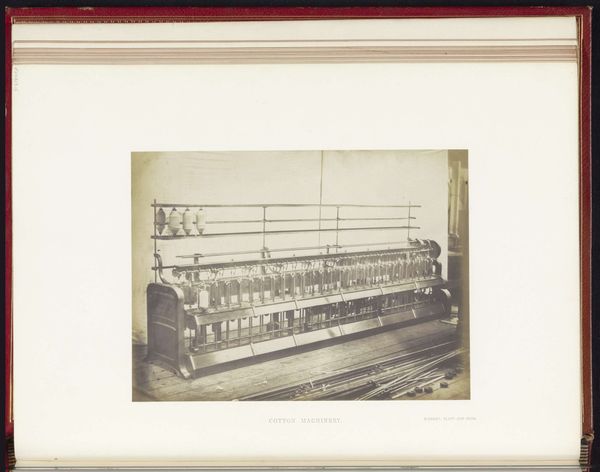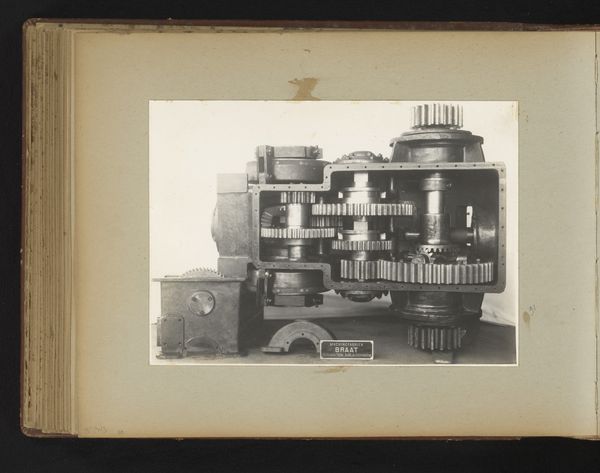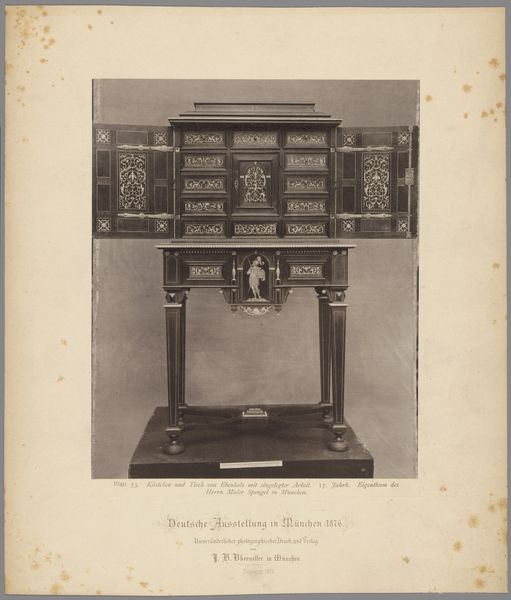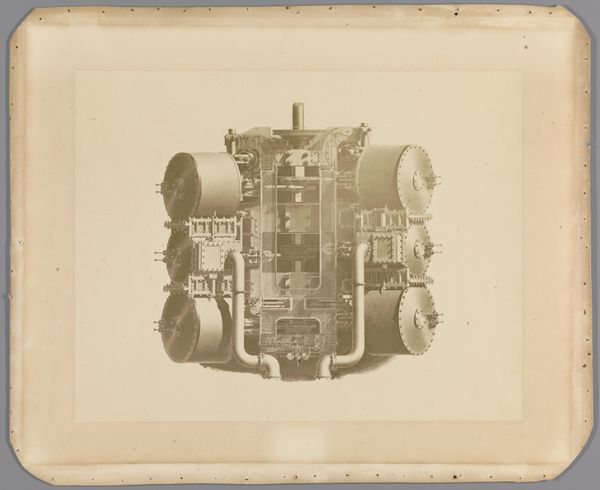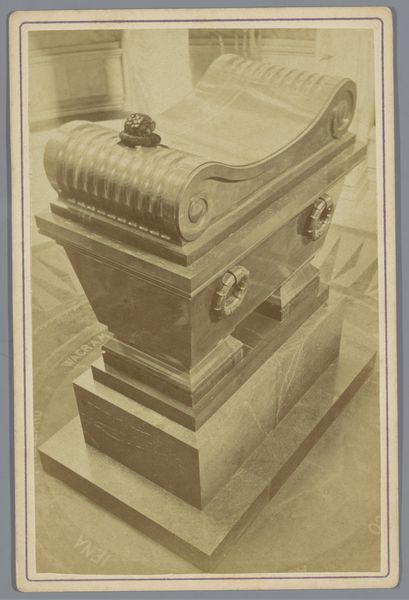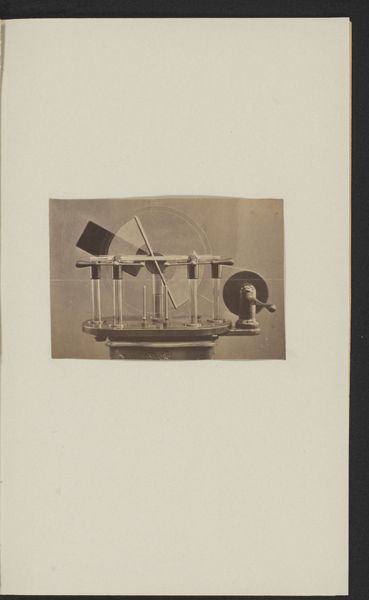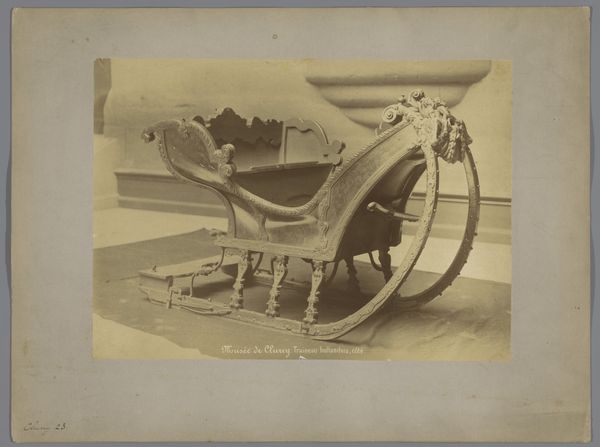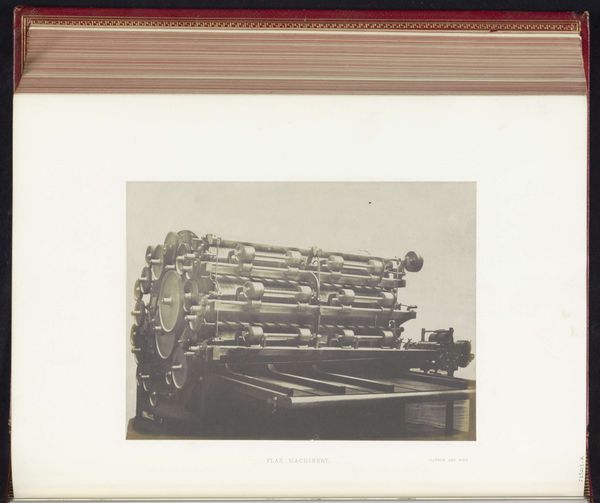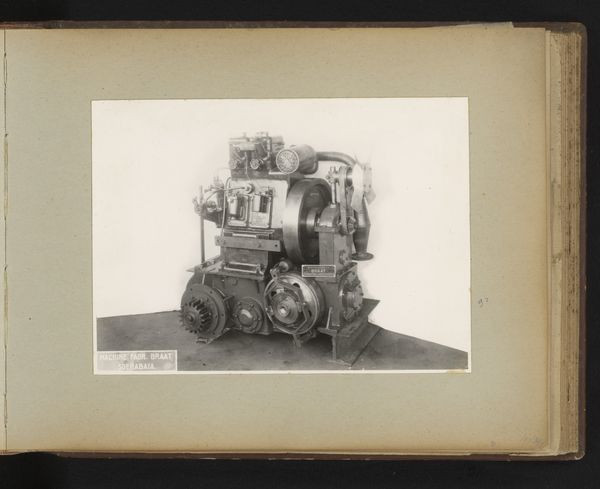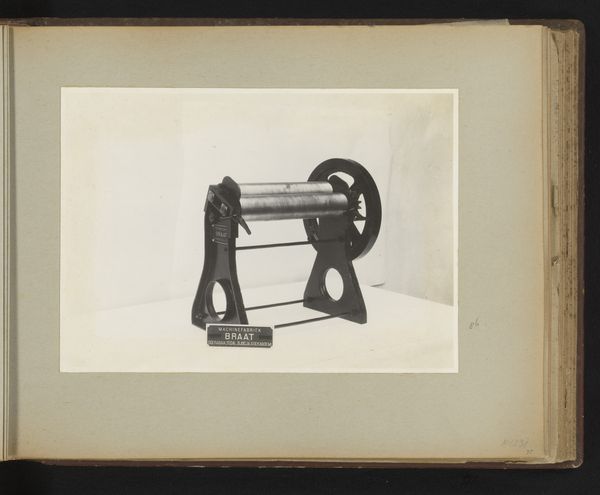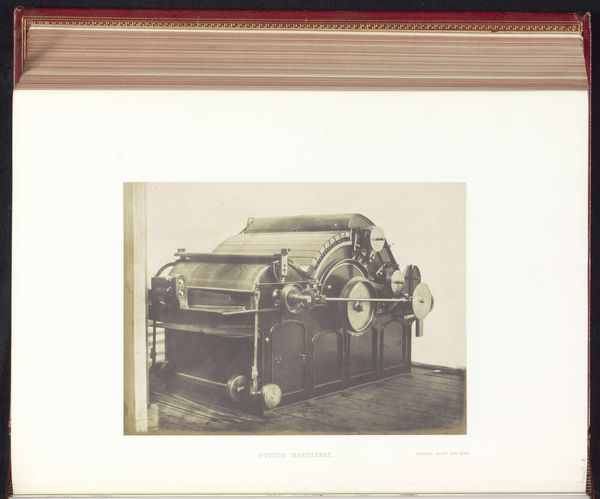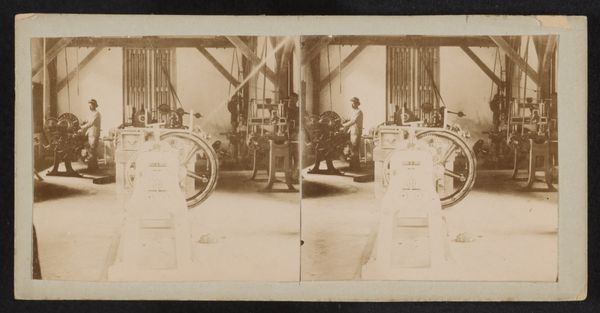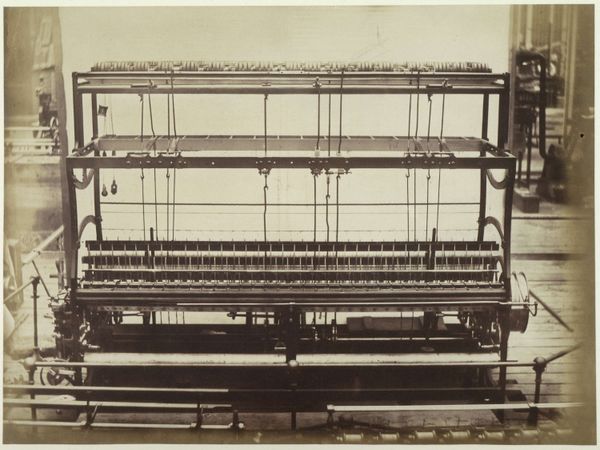
Dimensions: height 260 mm, width 345 mm
Copyright: Rijks Museum: Open Domain
Curator: Oh, this photograph is absolutely enchanting. What strikes you first about it? Editor: Curator: That quiet sheen... It’s like moonlight trapped in silver. What is it exactly? Curator: This gelatin-silver print, taken between 1850 and 1900 by Médéric Mieusement, showcases a fourteenth-century reliquary from the Musée de Cluny, Paris. Its title is “Buisvormige relikwie uit de veertiende eeuw.” Editor: So, it’s a photograph *of* a reliquary, not the reliquary itself. That context matters, doesn’t it? This act of photographic documentation highlights a desire to capture and share historical and religious artifacts with a wider audience. Consider the labor that goes into this image; sourcing and mixing the materials and chemicals needed to produce and develop such image. Curator: Indeed, Mieusement beautifully captures its delicate features. Notice the miniature figures standing guard, seemingly whispering secrets to the cylindrical container, topped with these spheres reminiscent of an abacus. I wonder what relics it might have once held and the lives it touched, now veiled in a century and more. There is something wonderfully evocative of faith. Editor: It really merges art and function. It raises questions about consumption, utility and preservation through material means. We see it only through this image; therefore, this photography is essential in creating social connection across periods in time. Curator: Mieusement wasn’t merely recording; there’s a reverence imbued within the frame. His use of romanticism pulls forth our nostalgia of something past, and the print itself acts like a new vessel carrying an old tale. Editor: So true. Thinking about materiality provides new depths to historical context! Thanks for bringing the piece and his process to light. Curator: And thank you for highlighting the image as an artform in itself, reflecting and refracting historical context.
Comments
No comments
Be the first to comment and join the conversation on the ultimate creative platform.
